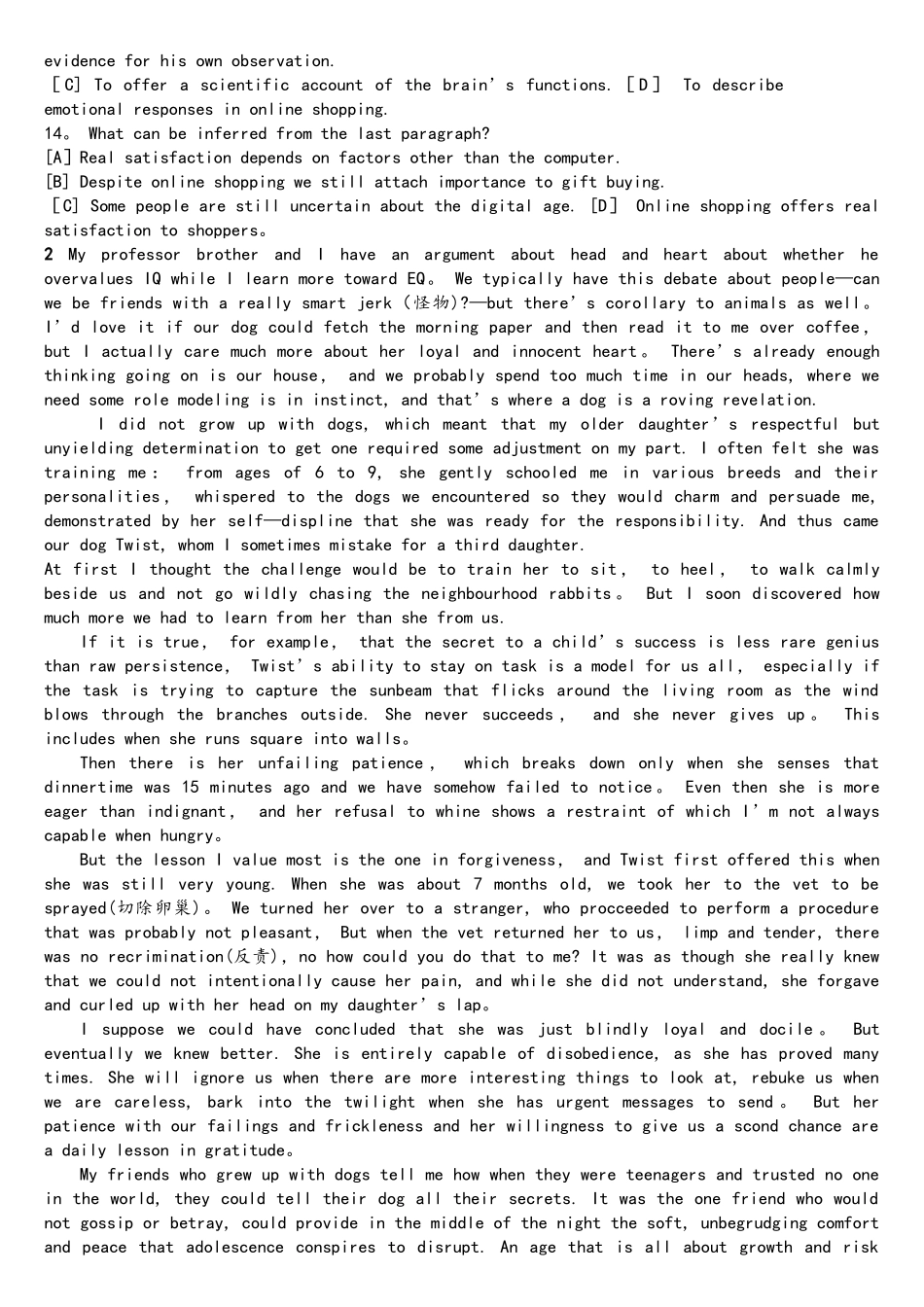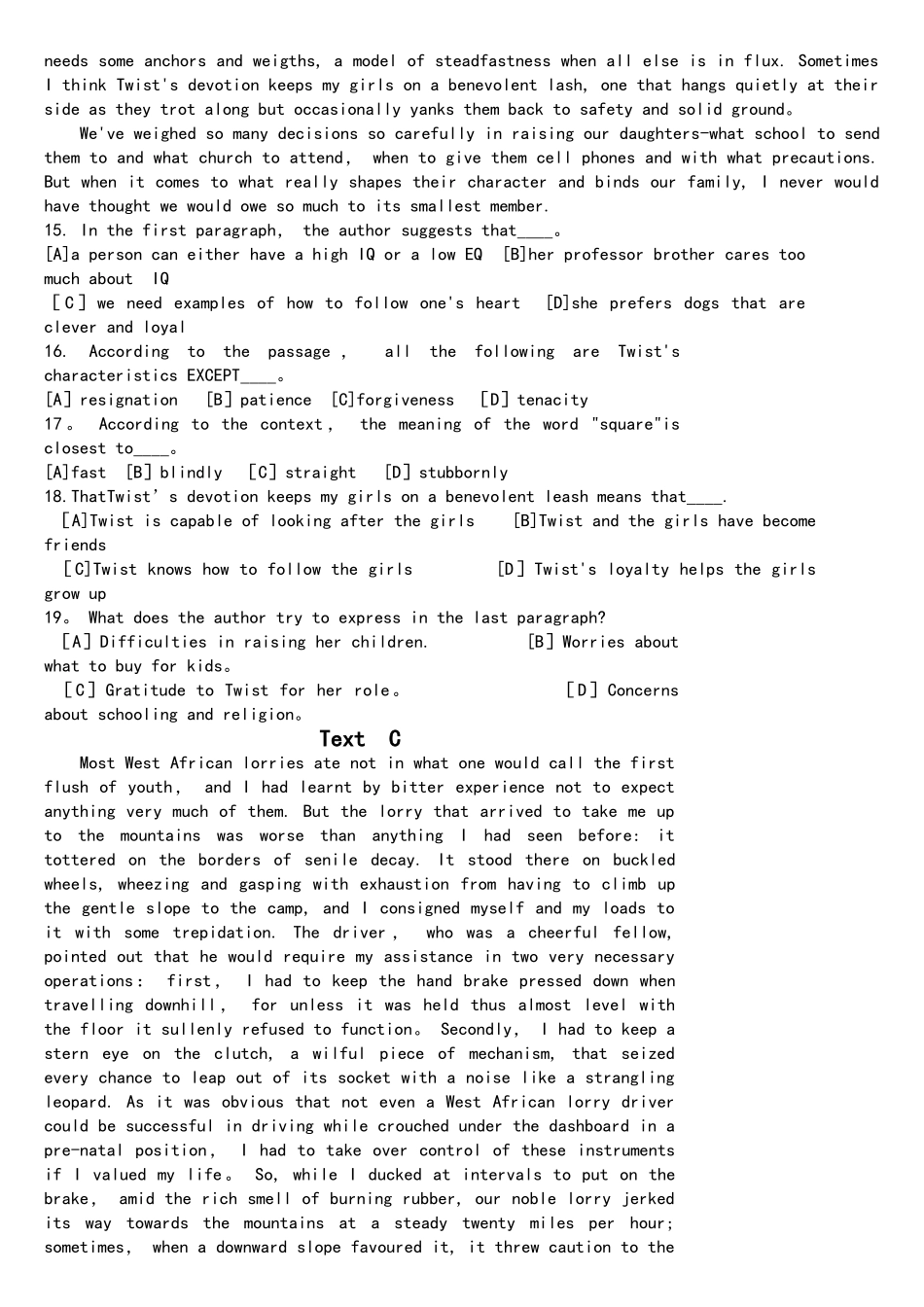In , many shoppers chose to avoid the frantic crowds and do their holiday shopping from the comfort of their computer. Sales at online retailers gained by more than 15%, making it the biggest season ever. But people are also returning those purchases at record rates, up 8% from last year。What went wrong? Is the lingering shadow of the global financial crisis making it harder to accept extravagant indulgences? Or that people shop more impulsively — and therefore make bad decisions — when online ? Both arguments are plausible 。 However, there is a third factor: a question of touch。 We can love the look but, in an online environment, we cannot feel the quality of a texture, the shape of the fit, the fall of a fold or, for that matter, the weight of an earring。 And physically interacting with an object makes you more committed .When my most recent book Brandwashed was released, I teamed up with a local bookstore to conduct an experiment about the differences between the online and offline shopping experience. I carefully instructed a group of volunteers to promote my book in two different ways. The first was a fairly hands-off approach。 Whenever a customer would inquire about my book , the volunteer would take them over to the shelf and point to it. Out of 20 such requests, six customers proceeded with the purchase.The second option also involved going over to the shelf but, this time, removing the book and then subtly holding onto it for just an extra moment before placing it in the customer’s hands. Of the 20 people who were handed the book. 13 ended up buying it. Just physically passing the book showed a big difference in sales。 Why? We feel something similar...


